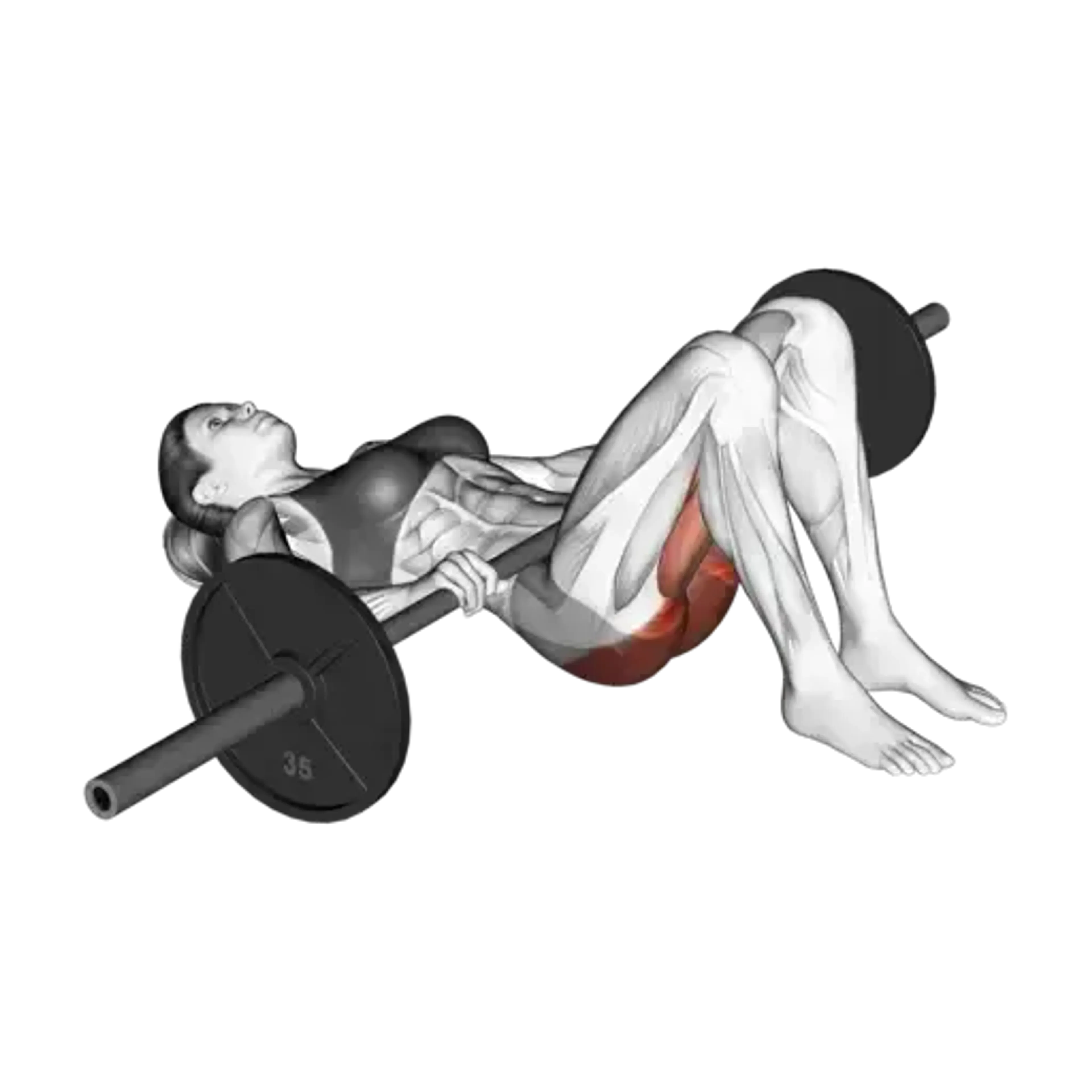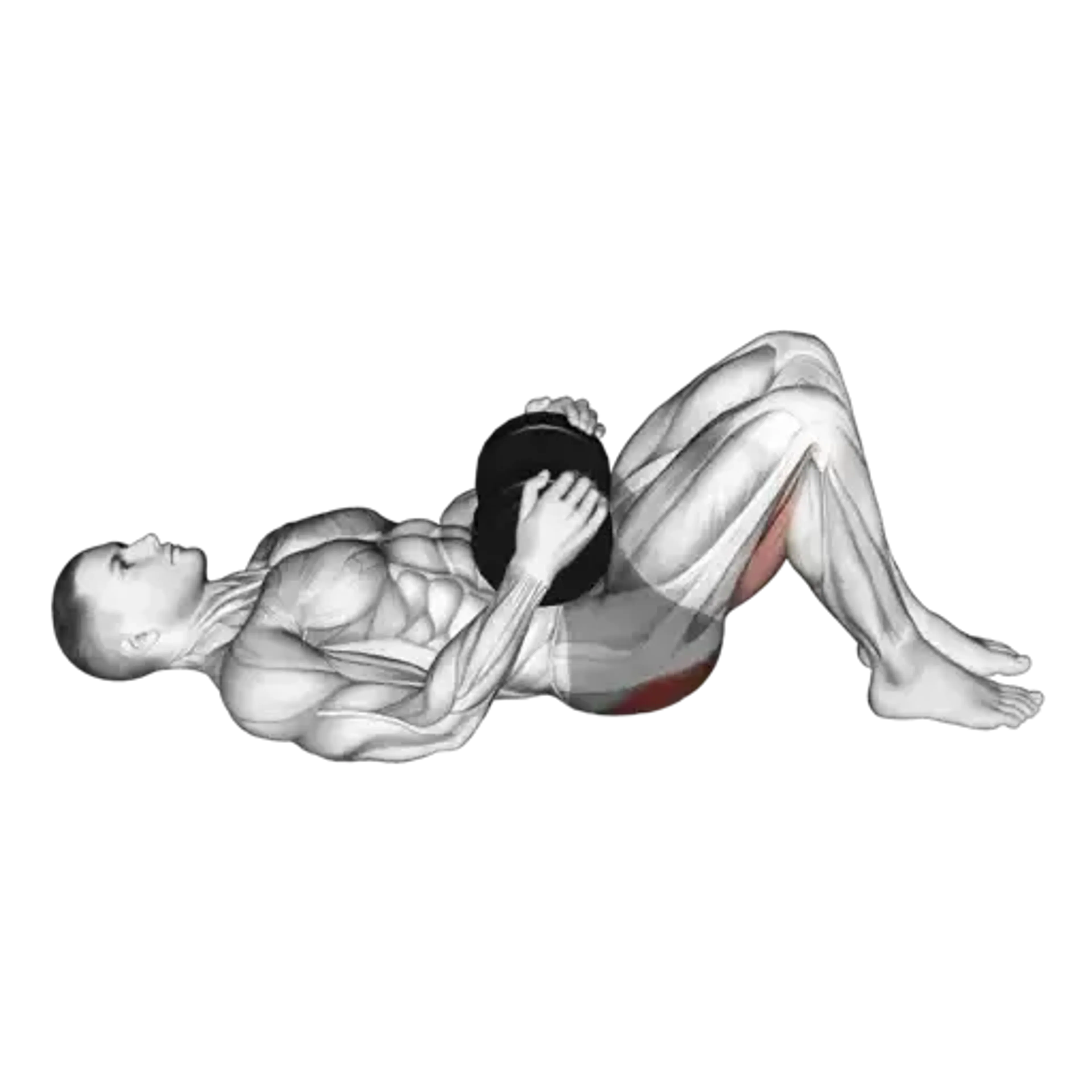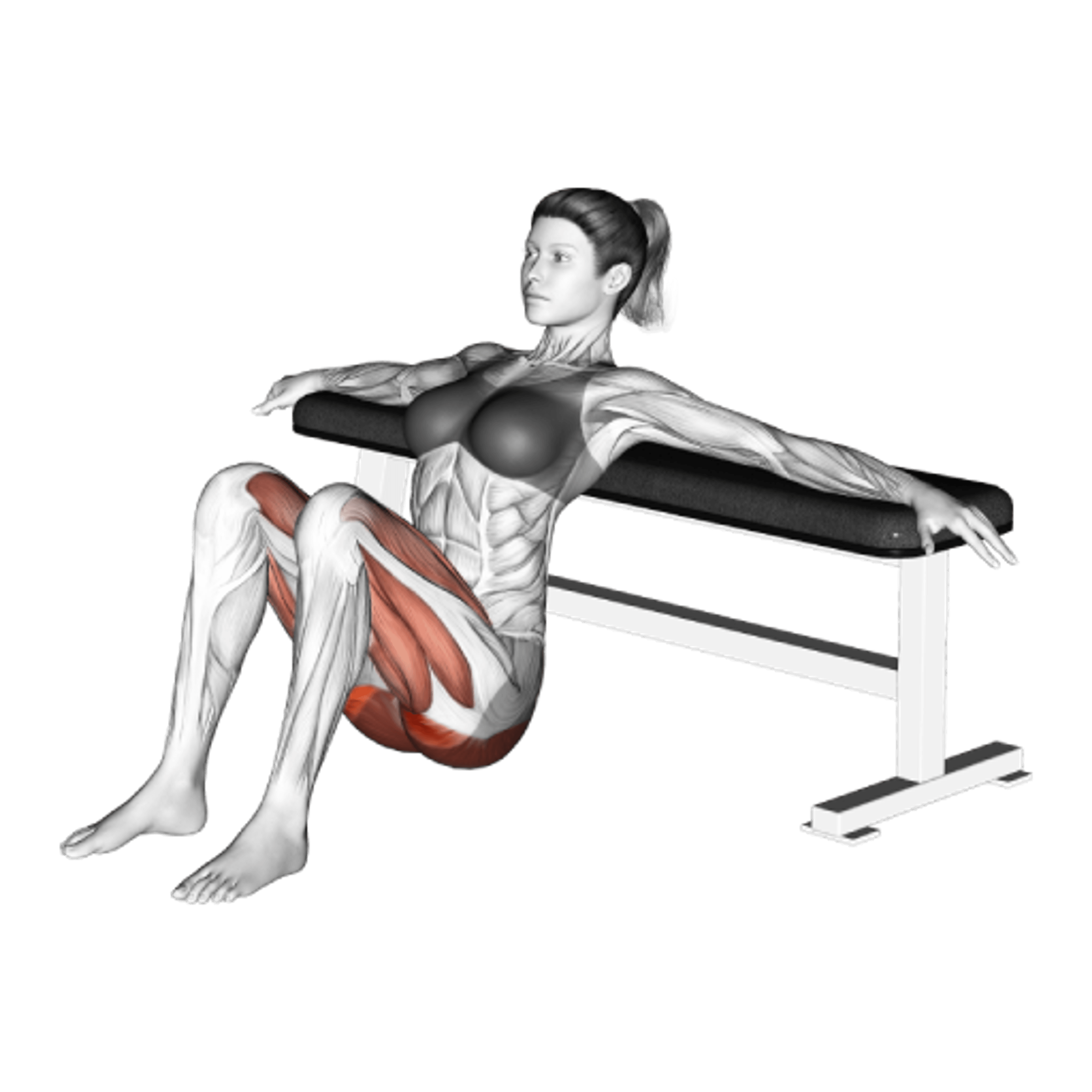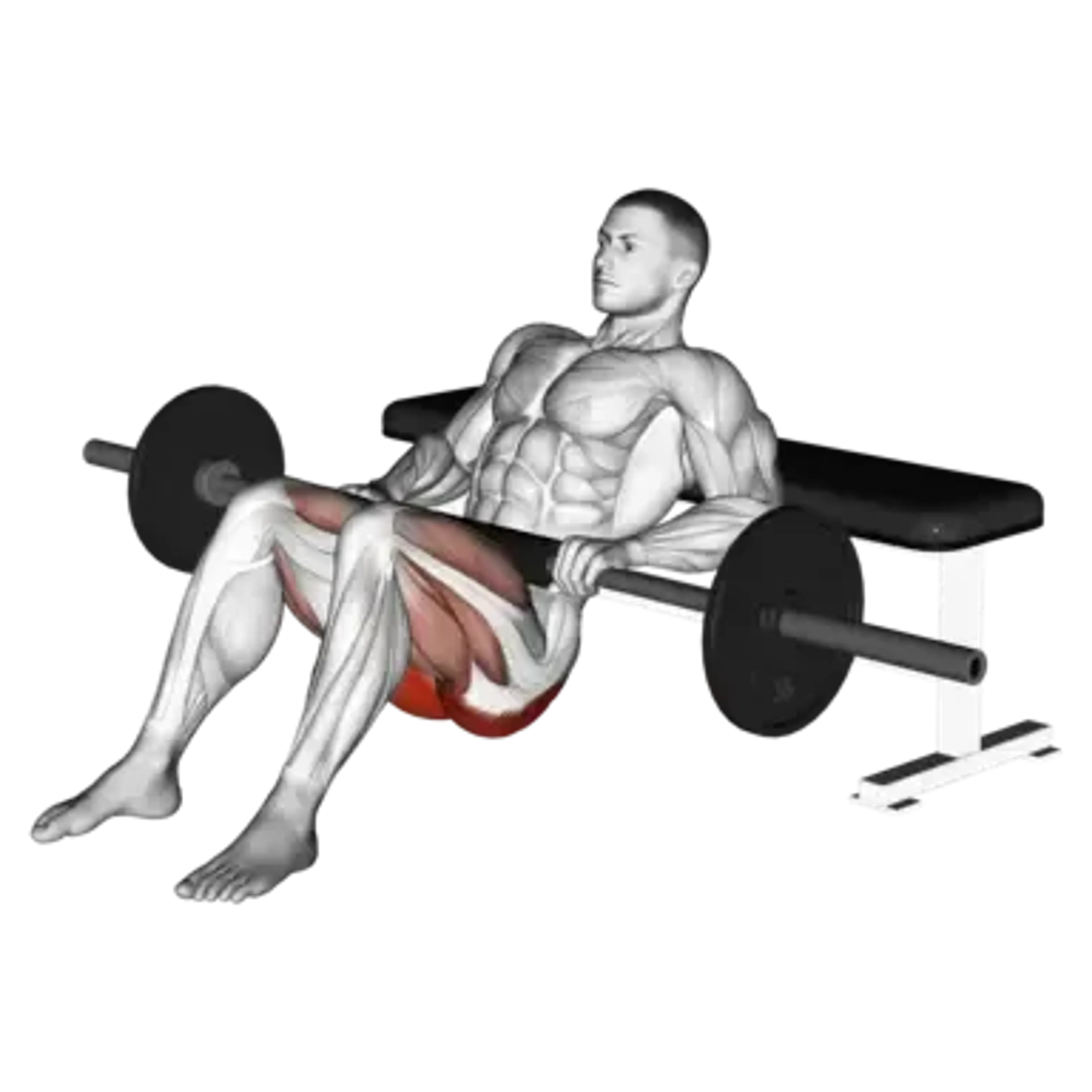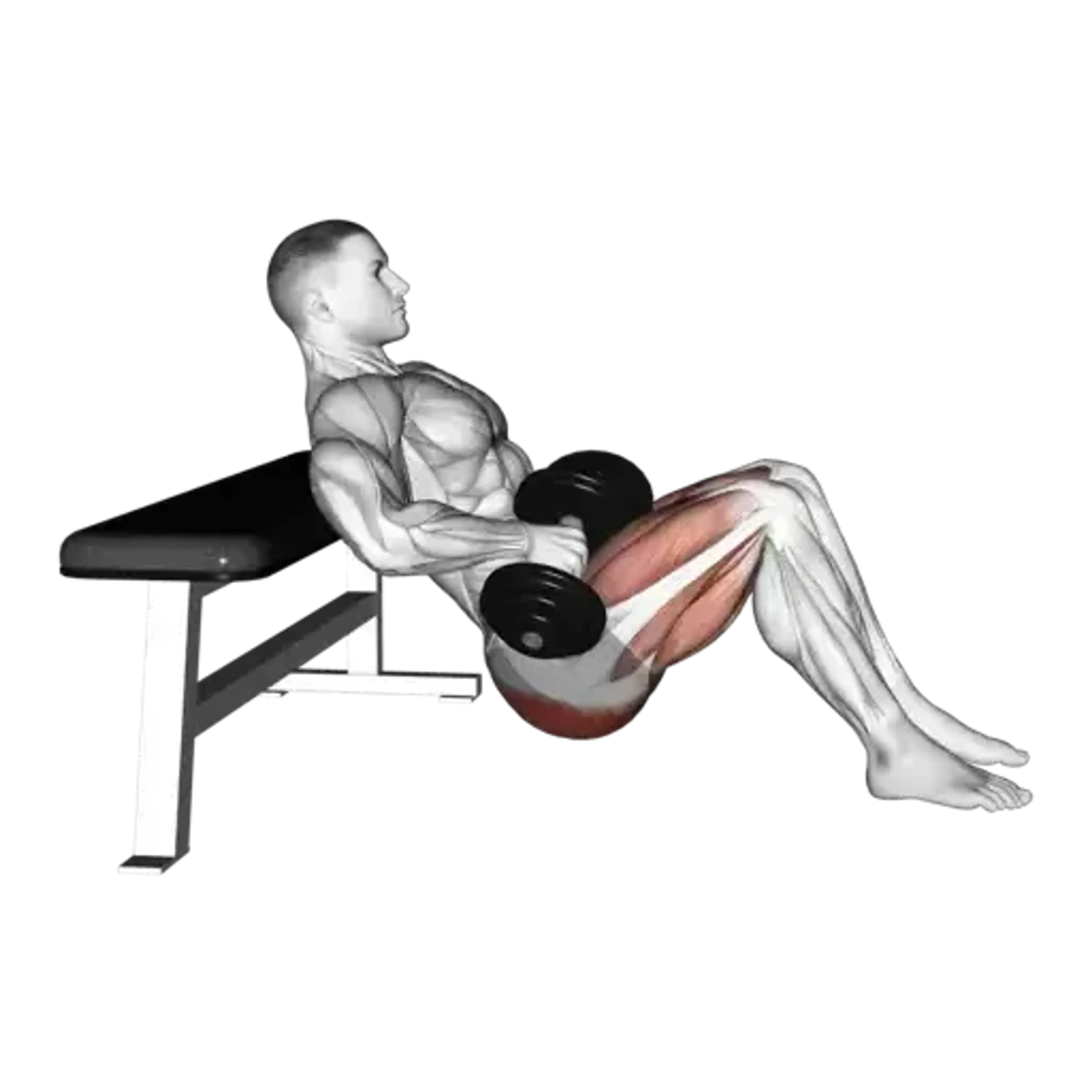Glute Bridge

Overview
- Primary Focus:
- Glutes.
- Equipment:
- Body weight.
- Difficulty:
- Beginner.
General Information
Glute Bridge is a compound exercise that primarily targets the glutes and secondarily engages the hamstrings and quadriceps. It is a beginner-friendly exercise that requires no equipment, making it accessible for home workouts or as part of a gym routine.
This exercise is highly effective for strengthening the posterior chain, improving hip mobility, and enhancing overall lower body stability. It’s often used in rehabilitation settings to address lower back pain or hip dysfunction, as it promotes proper glute activation while reducing strain on the lumbar spine.
Additionally, the Glute Bridge serves as a foundation for more advanced movements like the Hip Thrust and Weighted Glute Bridge. Incorporating it into a routine can help build strength for squats, deadlifts, and other compound lifts, making it a versatile addition to any workout program.
Muscles Worked
- Gluteus Maximus
- Primary
- Gluteus Medius
- High
- Biceps Femoris
- Medium
- Semitendinosus
- Medium
- Adductor Magnus
- Low
- Gluteus Minimus
- Minimal
- Rectus Abdominis
- Minimal
- Rectus Abdominis (Lower)
- Minimal
Instructions
- Lie on your back with your knees bent and feet flat on the floor, hip-width apart. Place your arms at your sides with palms facing down.
- Engage your core and squeeze your glutes as you push through your heels to lift your hips towards the ceiling.
- Continue lifting until your body forms a straight line from your shoulders to your knees.
- Hold the top position for a moment, ensuring your glutes remain activated.
- Lower your hips back to the starting position in a controlled manner.
- Repeat for the desired number of repetitions.
Common Mistakes
Injuries
The Glute Bridge is considered a low-risk exercise, especially when performed with proper form.
One potential risk is lower back strain if the hips are overextended at the top of the movement. To prevent this, avoid arching your back and focus on engaging the glutes to drive the motion.
Knee discomfort may also arise if the feet are positioned too far from or too close to the glutes. Ensuring the feet are planted hip-width apart and the knees track in line with the toes can help reduce unnecessary strain.
Alternative Exercises

Frequently Asked Questions
- Q: Can I add weight to the Glute Bridge for more intensity?
- Q: Is the Glute Bridge good for lower back pain?
Yes, when done correctly, it can strengthen the glutes and core, helping to reduce strain on the lower back and alleviate pain.
Overview
- Primary Focus:
- Glutes.
- Equipment:
- Body weight.
- Difficulty:
- Beginner.
